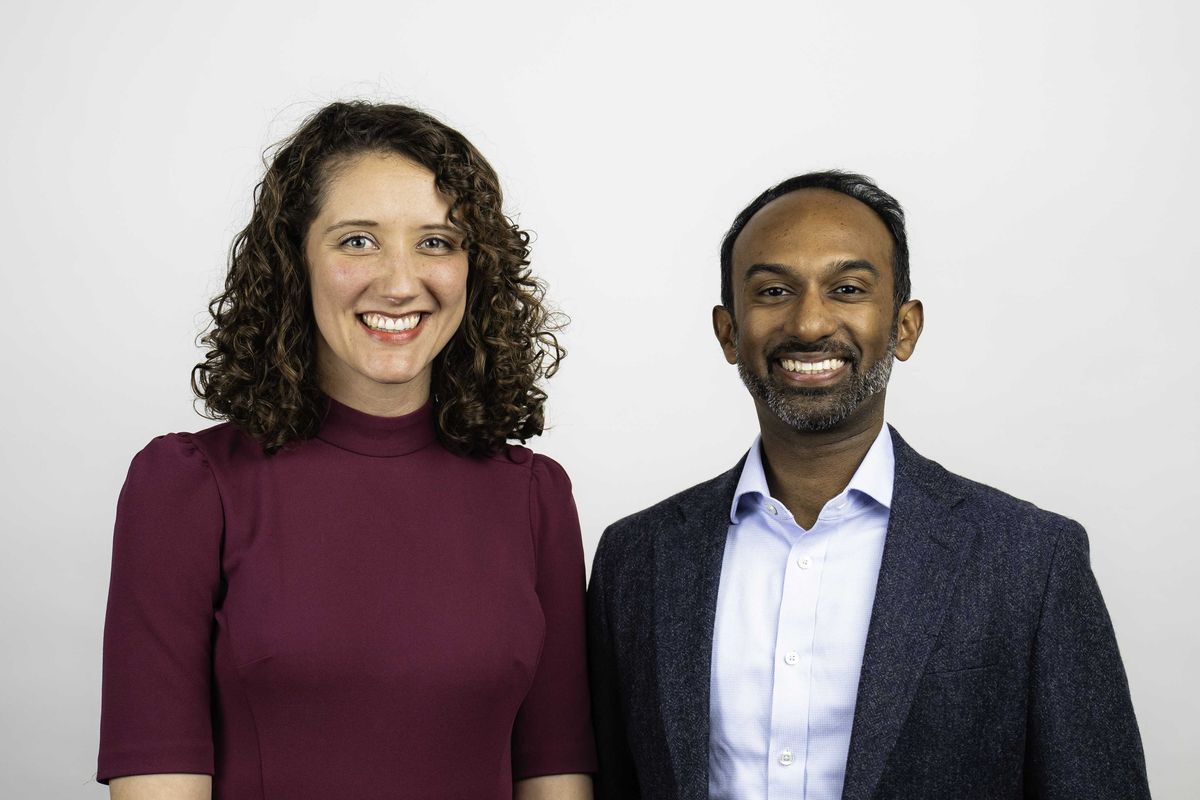6 tips for landing press coverage for Houston entrepreneurs, business owners
Guest column
If you’re looking to build brand awareness, establish trust and credibility, and reach more customers in 2023, landing a press placement can be impactful for your small business. A traditional PR placement, also known as “earned media,” is one of the most valuable endorsements for a business, and you do have to earn it.
The good news is that in today’s digital landscape you don’t need a PR agency or consultant to land press coverage, you can pursue media coverage on your own. By prioritizing your brand foundation and telling your brand story through your owned channels (such as your website, newsletter and social media platforms), you can capture the attention of the media. Pair a strong brand and storytelling with the appropriate tactics for working with editors, and you will be set up for success.
Read our insider tips below to help you secure press coverage for your business this year.
1. Good PR starts with your brand
If you’ve ever wondered how to catch the attention of an editor, it starts with your brand — and by brand, we don’t just mean your branding (logo, colors, fonts, etc.) — although that is one component.
Good PR starts with a good story, one that is unique and differentiated. Editors are looking for more than just a product or service – they are looking for something special and new that their readers will benefit from.
Building your brand is about establishing the personality and story behind your business that goes beyond sales and promotions. Taking the time to build your brand is one of the best investments you can make as a small business owner. Not only will it help with your PR and marketing efforts, but it will also support your overall long-term success.
Building a brand foundation and learning how to tell your brand story includes your company positioning, your values, articulating what makes you different, crafting your founding story, refining your visual aesthetic and tone of voice, and much more.
Being able to communicate what makes you different, what you stand for, what you have to offer, and what you want to be known for – and developing a brand aesthetic that reflects your unique point of view – will allow you to stand out from the competition and capture the attention of the media.
2. Tell your own story
In our digital world brands are being discovered online. This means that your website and Instagram channel are often the first impression of your business to both consumers and editors. That said, it’s essential for your success that your digital presence communicates and reflects your brand foundation – the personality and substance behind your business. One question to consider is if your ideal customer or editor came to your website or Instagram for 30 seconds, would they walk away knowing the three most important things about your business and with a clear idea of what you stand for, what makes you different, and what you have to offer?
Your owned channels also provide an exciting opportunity to connect directly with your ideal customers, influencers, potential partners, as well as the media. By sharing your brand narrative consistently across your owned channels, you have the potential to build a meaningful relationship with your audience that can grow into loyal followers and customers.
The key is communicating consistently – you want your brand to be cohesive across all channels, so that everything from an Instagram post to your homepage reflects the unique brand positioning you’ve established. To achieve a consistent brand narrative, you want to make sure your messaging, photography, copywriting, graphics, and any other creative materials reflect the brand foundation you’ve built.
An invaluable practice at any stage of business is to conduct a brand audit in order to evaluate if your digital channels are communicating your brand foundation effectively. Read our three steps for conducting a brand audit here.
3. Draft and organize your materials
Drafting and organizing materials is one of the first tasks to tackle when preparing to reach out to the media. Editors are inundated with emails (thousands and thousands a day) and receiving easy-to-review dropbox links and files makes their job much easier. A lengthy email without a clear hook is a sure way to end up in someone’s Trash folder and left unread.
We cannot express enough how important photography is for securing press. Many publications rely on a brand’s photography. Without images it is oftentimes impossible for an editor to cover a brand. This goes for your personal brand too - if you’re an expert or offer a service, you will also need to provide a professional headshot or lifestyle image. Brands with consumer products will also need to show product photography.
There are a wide range of materials you may need based on your industry, but here are the essentials:
- About page: a one-page document outlining the who, what, when, where, and why of your company
- Bio: an overview of your background and why you started your company, with a few personal details
- Line Sheet: images, pricing and key details for product collections
- Product photography: Lay flats of your product on a white seamless background
- Lifestyle photography: Images that bring your product or service to life by showing them in use
- Headshot: Professional photo of the founder or expert styled in a way that is relevant to the brand. I.e. if you’re a chef or a nutritionist, take your headshot in a beautiful kitchen, if you’re an artist or interior designer take your headshot in your studio
4. Research, research, research
We often get asked how to know who to reach out to. Every publication is different, which is why research is very important. Taking the time to properly research will save you a lot of time in the long-run and allow you to pinpoint which outlets and contacts are the best fit for your business. As you research, be sure to organize contact information and notes into a media list so you can keep track of who to reach out to and any feedback you receive.
We have a free media list template that you can download here.
When researching, keep these four tips in mind:
- Be targeted – Focus on publications whose audience matches your own and who feel like a fit with your brand aesthetic and values
- Scope out the competition - Where have your competitors, or brands and experts you admire, been featured?
- Read recent articles - Whether you pick up magazines or do a Google search, look and see who has been writing about brands or other experts in your industry lately. When you use Google Search, use the Tools option to narrow down your search to articles in the past 6 months or year.
- Look at the masthead - A magazine’s masthead is a list of its editorial staff and can give you helpful insight into who covers which category. You can usually find a masthead online, or in the front pages of a print publication.
5. Think like an editor
Editors are looking for interesting stories, new items, and pieces that will pop on a page. They work off of editorial calendars, and many magazines have set themes for each month. You can Google a magazine’s editorial calendar to find out their upcoming themes and think about where there might be a fit for your product or service, or for you as the founder of your business.
To think like an editor, keep these three tips in mind:
- Utilize Editorial Calendars. Most reputable magazines, outline outlets, and even blogs, share an annual “editorial calendar” on their website. Editorial calendars outline the theme for each issue, the date the issue comes out, and the topics they are covering. While editorial calendars are technically created for advertisers, they are an invaluable free resource for PR planning if you know how to use them to your advantage.
- Learn Lead Times. Be sure to keep what PR professionals call “lead times'' in mind. There are two main categories most publications and media outlets fall into: long lead and short lead. Long lead publications are typically glossy print publications or special issues of a newspaper that work about working three to six months in advance. For example, if you want to pitch an item for a holiday gift guide in a December issue (which hits stands in November) you want to be ready to send that information to the publication in July. Short lead publications and/or outlets include daily newspapers, weekly magazines, online outlets, such as digital versions of magazines and blogs, and broadcast news. Their lead times can range from a month in advance, to a week or even less.
- Understand What is “Newsworthy” vs. Seasonal/Evergreen. Editors cover what is new and newsworthy, as well as seasonal and evergreen topics that are relevant to their readers. When thinking about what you have to pitch, such as a specific product, consider whether it is evergreen and can be covered at any time, or if it is a seasonal item. This will guide the timing and context of your pitch.
6. Build relationships
Building relationships is incredibly impactful when it comes to landing press placements. Reaching out in a personal way, gifting your product or service, and keeping in touch with editors and writers over time will increase your chances of being covered with the right fit arrives.
When reaching out to editors, what do you have to offer? News? Tips? A cool new product collection to check out? This is not a transactional relationship, think long term and how you can be a resource for this editor or publication beyond what you are pitching at this moment.
Personalization and authenticity are key. Your first email to an editor should not be a “pitch” or a press release, it should be an introduction of yourself and your business. Be sure to research each person in advance and follow them on social media so you can personalize each email – mention a recent article of theirs that you enjoyed reading, or a recent Instagram post on their feed that you found interesting.
If you are able to set up a call, Zoom, or in person meeting, that is ideal for relationship building. We also recommend offering to gift your product or service to contacts at outlets that are on the top of your dream press list. This goes a long way and will allow them to be able to speak about your product or service from firsthand experience.
Lastly, be sure to follow up. If you don’t hear back, there is a good chance they missed your first email. Wait a couple of weeks and send a nice follow up. Remember, this is a long game and it takes time.
------
Kathryn Worsham Humphries and Carla M. Nikitaidis are the Co-Creators of All You Need Method, a PR and brand strategy consulting firm for small business owners, creative entrepreneurs, and digital creators who are looking to build a brand and raise brand awareness through PR, content marketing, and partnerships. They offer support through their online course, The Brand Starter Kit, 1:1 Strategy Sessions, and custom client projects.




















